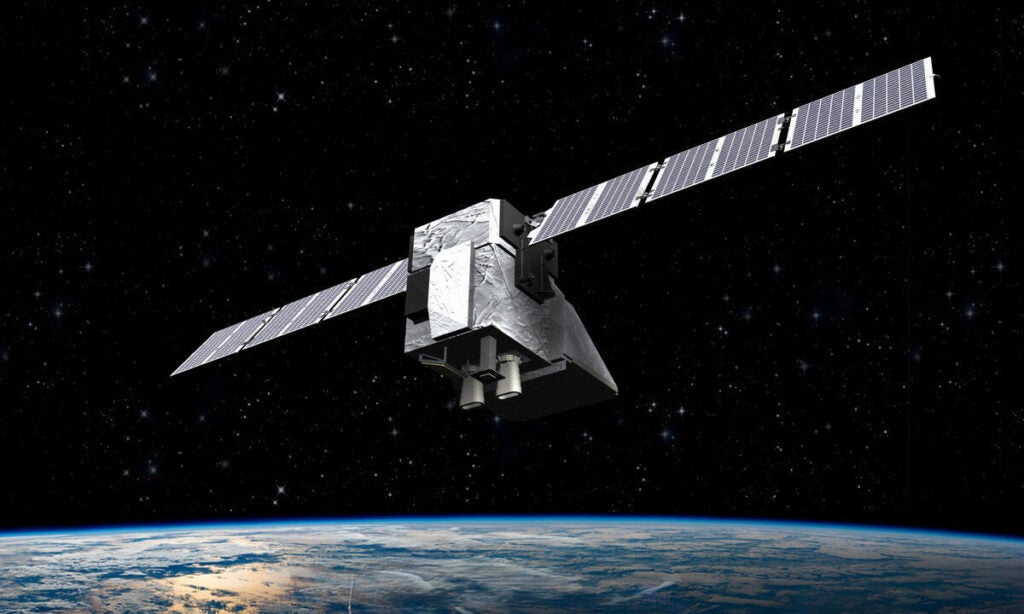MethaneSAT brings key tool to oil & gas operators, gives stakeholders unprecedented transparency
Methane is now a central part of the oil & gas industry’s climate challenge. New regulations in the U.S and Europe, growing concern in Asia and mounting interest from investors and global gas markets mean increasing pressure to improve emissions performance. It was also a focal point in the COP28 climate talks, where 52 producers representing more than a third of global production joined the Oil & Gas Decarbonization Charter, pledging to reduce emissions to near zero and to eliminate routine flaring by 2030.
Now comes MethaneSAT, which will launch into orbit this month aboard a SpaceX Falcon9 rocket. There, the satellite will provide vast quantities of methane emissions data on all of the world’s major oil and gas regions. Information from the satellite will be public for anyone to see — in fact it will even be carried on Google Earth Engine, a premier tool for thousands of analysts.
MethaneSAT brings key tool to oil & gas operators, gives stakeholders unprecedented transparency Share on XMethaneSAT will bring unprecedented capabilities to the existing set of methane-detecting satellites and usher in a new era of transparency and accountability. What today is a cloudy and coarse muddle of company estimates and an incomplete collection of studies will become a much clearer picture of total methane emissions, where they come from, and how they change over time.
Shining a light on hidden methane emissions.
Developed by an EDF subsidiary, MethaneSAT is designed for two purposes: First, to give companies and regulators data to find and fix emission sources faster, and second, to make it easy for stakeholders — such as civil society organizations, industry investors and buyers in major gas markets — to see and compare the results.
Most producers recognize the problem. But for all the attention methane has received, nobody really knows how much methane operators are releasing. Official inventories have been proven to significantly underestimate real emissions. Most accounting is based on theoretical calculations. A series of studies by EDF found that emissions across the U.S. oil and gas supply chain were 60% higher than EPA estimates at the time.
MethaneSAT spells an end to all this mystery. By combining the ability to precisely measure methane levels with high spatial resolution over wide areas, it can detect emissions from small, widely dispersed sources other satellites can’t see today, which may account for half or more of the total. It will also identify larger emission sources in places that other satellites may not be looking.
For the first time, we’ll be able to calculate total global methane emissions and track how emissions change over time for a production basin, a country or the world.
Risks and rewards of methane transparency.
MethaneSAT’s technical capabilities are a game changer. But its impact on the oil and gas industry goes far beyond its technical specs. That’s because MethaneSAT data will be publicly available to anyone on Earth with an internet connection. Legislators, regulators, investors, competitors, customers, climate watchdogs, voters. In short: everyone.
Time and again, we have seen how increased transparency can spur higher standards within the oil and gas industry.
As part of our PermianMAP project, EDF released aerial measurements of methane emissions from over 11,000 wells and facilities over a three-year period in a region of the Permian Basin. The first batch of data catalyzed a wave of industry action, with operators using a range of technologies (including their own airplanes) to quickly identify and mitigate large emission sources.
Over the course of 24 months, many operators showed a significant decrease in emissions compared to the first tranche of data that was released, with further reductions after more data was released. MethaneSAT scales this regional example to the entire planet.
For companies that already recognize the critical role methane performance will play in their future success, MethaneSAT data will be an indispensable tool in their efforts to demonstrate they are following their own pledges and commitments with meaningful action. To date, even the most responsible companies have limited emission data disclosure and face myriad stakeholders who remain skeptical of their emission reduction pledges.
MethaneSAT data will be especially helpful to operators in quantifying emissions from joint venture assets they don’t directly operate but where they certainly have a responsibility for emissions. Some regions simply don’t have reliable measurement options available. Some countries won’t allow them. With MethaneSAT, companies that want to track the methane performance of far-flung global assets won’t have to invent new technology or ask anyone for permission.
Of course, some companies may see this radical emission transparency as a risk to their business.
Their customers will know how much methane they emit, which will pose significant challenges to companies that sell gas in major markets like the EU and others that are starting to factor in upstream emissions associated with their imports. Regulators will know true emission levels and will have a new tool to hold companies accountable to local requirements. Shareholders, investors and advocacy groups will know whether companies are following through on climate pledges and commitments.
But whether these are true risks depends on whether companies embrace or reject this new data landscape. Smart operators will turn their methane performance into a competitive and regulatory advantage. Others risk damage to their brands and bottom line. The reward will be far-reaching. For us to achieve the dramatic methane emission cuts we need to protect the climate, we need the entire industry to use this powerful new tool to everyone’s advantage.











